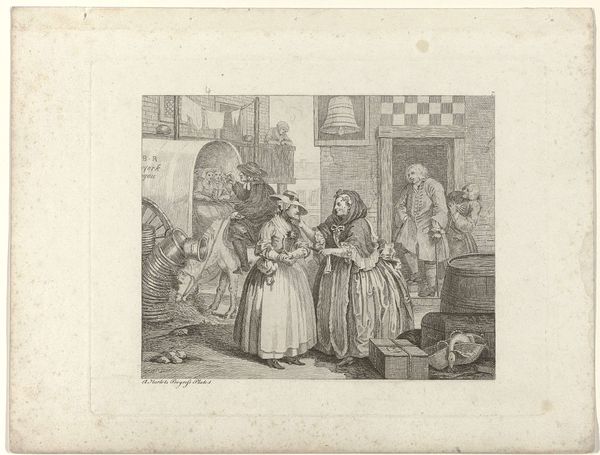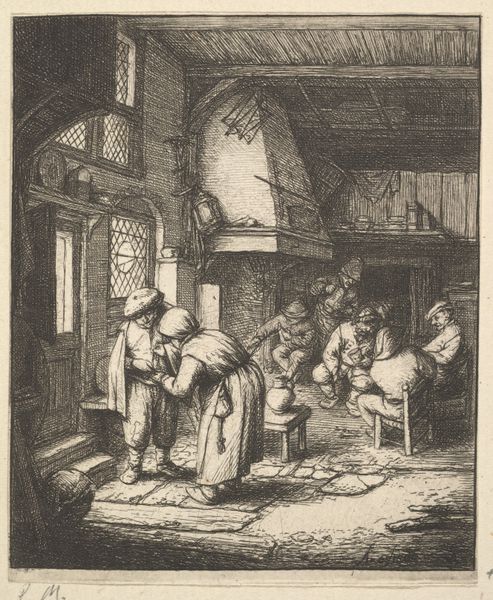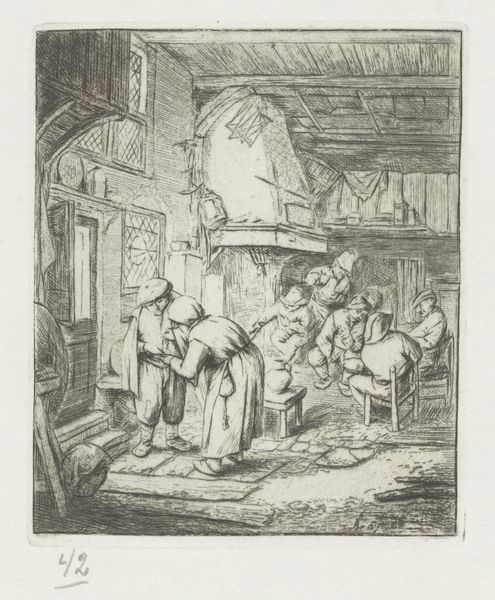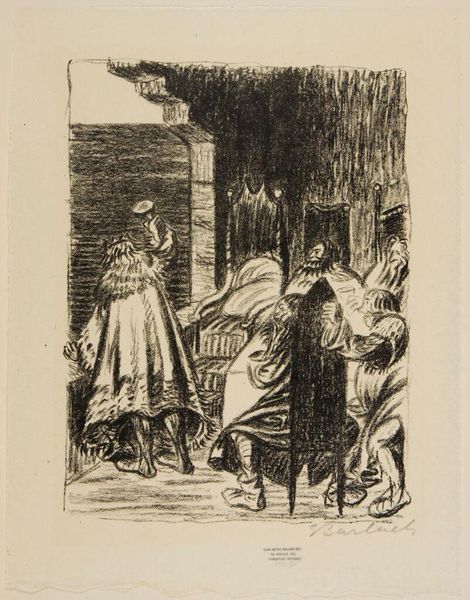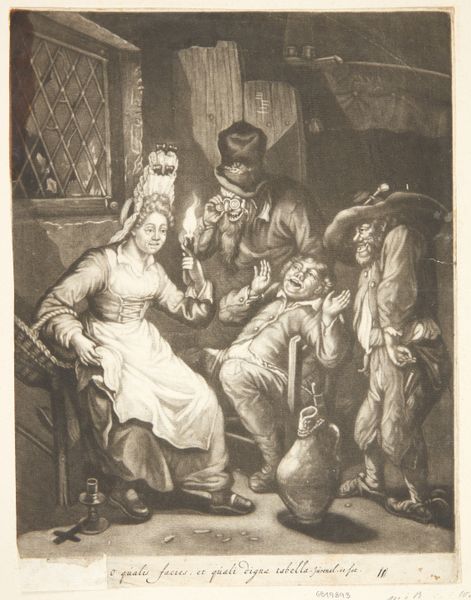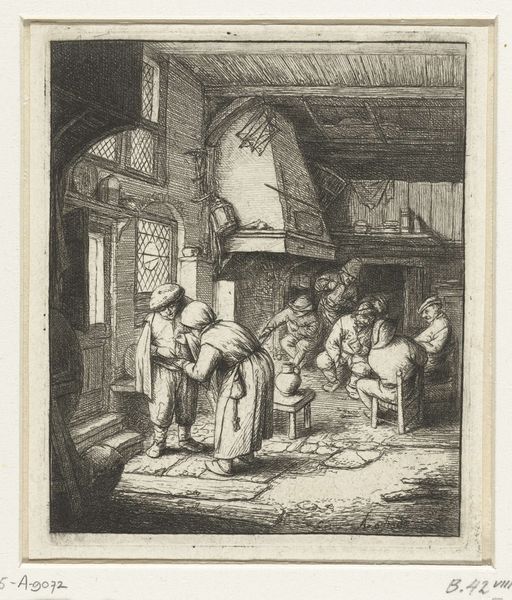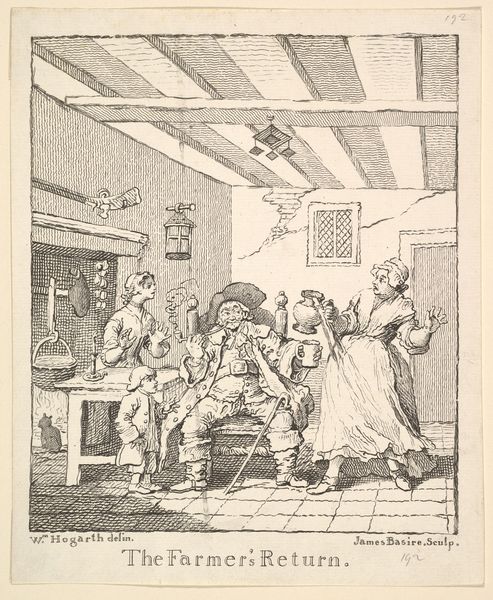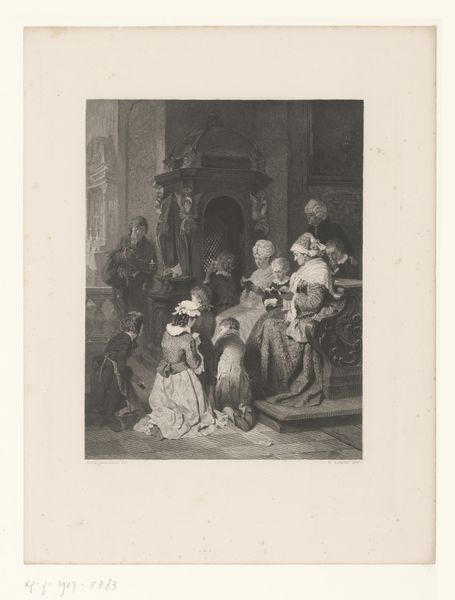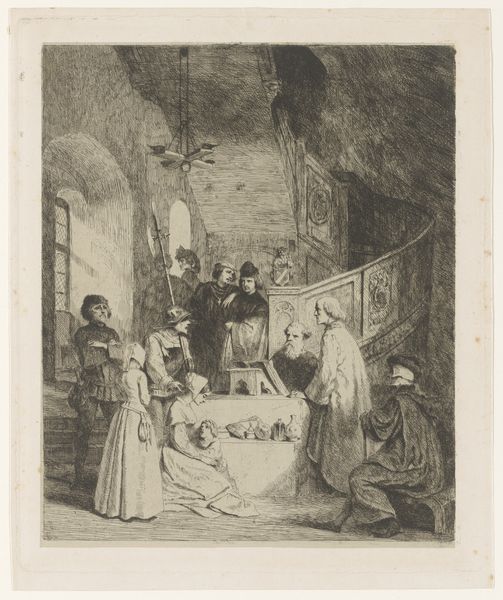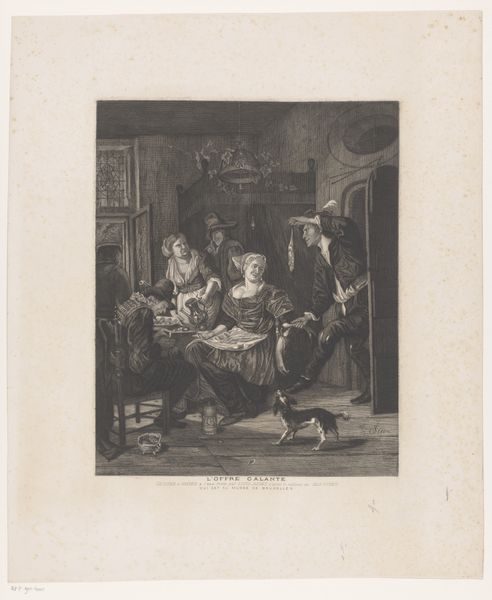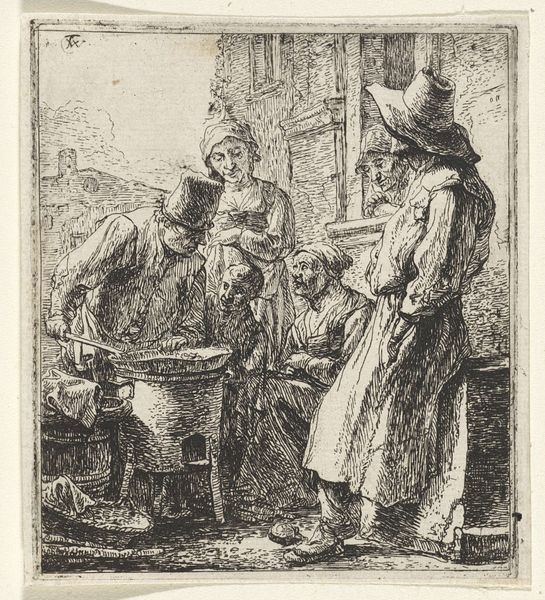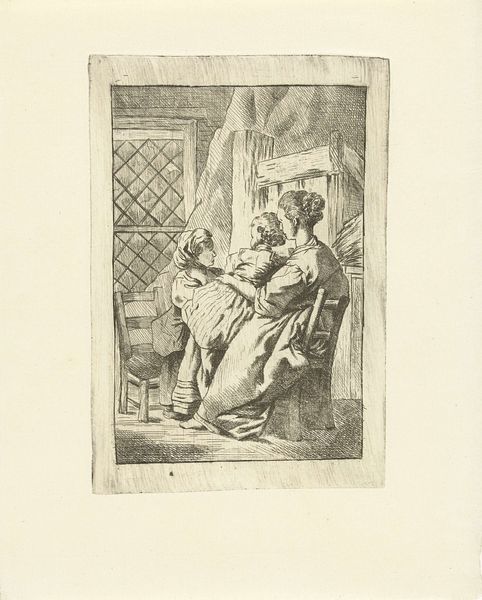
print, etching
#
narrative-art
# print
#
etching
#
figuration
#
genre-painting
Dimensions: height 198 mm, width 153 mm
Copyright: Rijks Museum: Open Domain
Editor: So, this etching is called *Drie figuren in een keukeninterieur*, or Three Figures in a Kitchen Interior, made sometime between 1824 and 1864 by Huib van Hove. It's currently held in the Rijksmuseum collection. I find the stark black and white really draws you in to this domestic scene. What do you see in this piece? Curator: Immediately, my eyes are drawn to the figures. The mother and child especially form a powerful dyad. Notice how the window is composed directly over them. The man in the door brings food and exchange. Are they haggling? The gestures feel important; an almost codified body language, a familiar rhythm within the confines of the home. Editor: Interesting…the gestures! Like some secret understanding? And what about all the objects? Curator: Yes, the objects amplify that feeling. The fish, the hanging vegetables, even the birdcage, everything tells a story of sustenance and the structuring of domestic life. Consider the tile floor; it suggests an everyday reality, while the barred window implies a barrier, both physically and perhaps socially or psychologically. Editor: So the birdcage *isn't* just a birdcage. What could it mean here? Curator: Cages often symbolize confinement but also protection. What stories do you see in these arrangements? How do they echo our modern understanding of domestic roles and power? Editor: It's making me rethink the narrative. At first glance, it’s just a snapshot, but there's a real complexity once you start considering the symbolic weight of everything. Curator: Precisely. It's through these symbols and their resonance over time that we connect with past lives, understanding shared experiences that still ripple through our own. It shows how objects become emotionally charged carriers of meaning. Editor: It definitely gives the scene a whole new dimension, considering everything from the gestures to objects. I never would have thought about the tiles or the barred window that way. Curator: Exactly, this art is always offering you more and more of itself. And it invites conversation between then and now, between ourselves and the subjects.
Comments
No comments
Be the first to comment and join the conversation on the ultimate creative platform.
